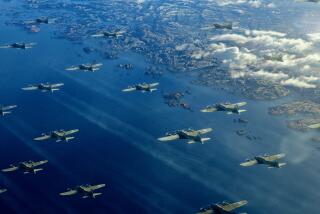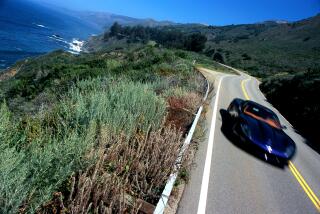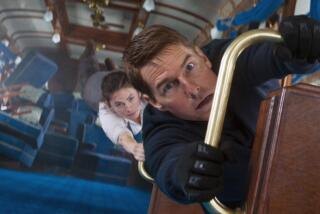Movie Sneaks: ‘Furious 7’s’ ‘insane’ car drop from on high adds fuel to action fire
It’s not every action film that can boast of having dropped a fleet of racing vehicles from a C-130 aircraft flying 10,000 feet over the Arizona-Nevada border. But “Furious 7” director James Wan, a newcomer to the fast-car franchise, wanted to make a statement with one of the sequel’s key heist sequences.
“We threw cars out of the back of a plane, no joke,” Wan explained. “We had skydivers photographing these cars as they were falling down. It’s as insane as it sounds.”
Revving into theaters April 3, “Furious 7” sees the movies’ crew — again led by Vin Diesel’s tough guy street racer, Dom Toretto, and Paul Walker’s ex-cop, Brian O’Conner — regroup to face down Jason Statham’s heavy, Deckard Shaw, who is on a personal quest for revenge.
Wan, 37, is no stranger to franchise filmmaking: He cut his teeth on such lower-budget horror films as “Saw,” “Insidious” and “The Conjuring,” all of which turned into outsized hits and spawned numerous, profitable sequels. But the “Furious” movies represent another order of magnitude on the Hollywood scale.
The six movies in the muscular street racing series have grossed $2.3 billion worldwide, with the most recent, 2013’s “Fast & Furious 6,” the highest grossing at $789 million.
Taking over the massively popular popcorn franchise from Justin Lin, who directed the previous four installments, Wan hoped to choreograph something that would surprise longtime fans.
He said the concept for the airplane set piece grew out of talks with producer Neal Moritz and with writer Chris Morgan; the car drop is part of a rescue mission/heist that requires the team to head into hostile foreign territory.
“This is their way of going in undetected,” Wan said.
(The sequence was filmed in October 2013, before a fatal single car-crash claimed Walker’s life and halted production for several months. “Furious 7” will mark the final screen appearance for the actor, who had completed a majority of his work on the film before his death.)
Modified versions of five cars were used for the scene: a 1968 Dodge Charger R/T, a 2015 Dodge Challenger SRT 392, a 1968 Camaro Z/28, a 2014 Subaru WRX STI and a 2014 Jeep Rubicon X.
Wan said that in addition to the skydivers photographing the cars hurtling through the air, cameras on helicopters also filmed the action.
“We were trying to get as much texture and tonality of practical photography into the film as we could,” Wan said. “When you’re dealing with action scenes that are pretty out there, the more you can ground the actual filmmaking of it, the more the over-the-top stuff will play on a more realistic level.”
Not that realism has ever been much of an overriding concern compared with crafting wow-factor spectacle.
“These movies kind of defy physics and logic to some degree,” he acknowledged.
More to Read
Only good movies
Get the Indie Focus newsletter, Mark Olsen's weekly guide to the world of cinema.
You may occasionally receive promotional content from the Los Angeles Times.











